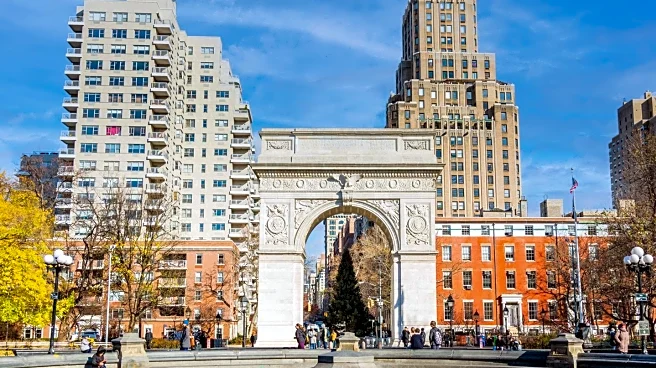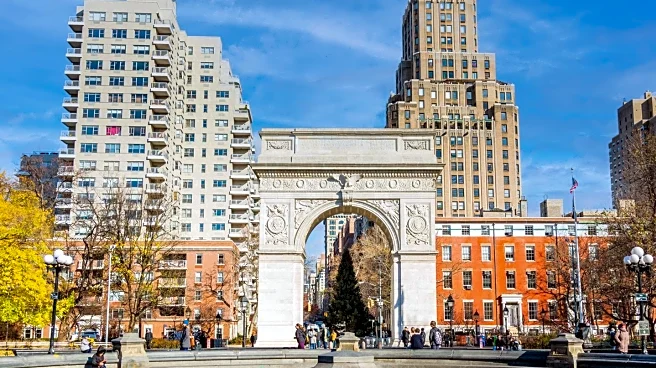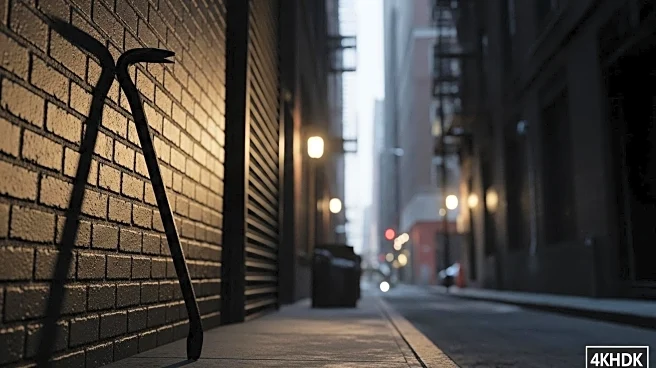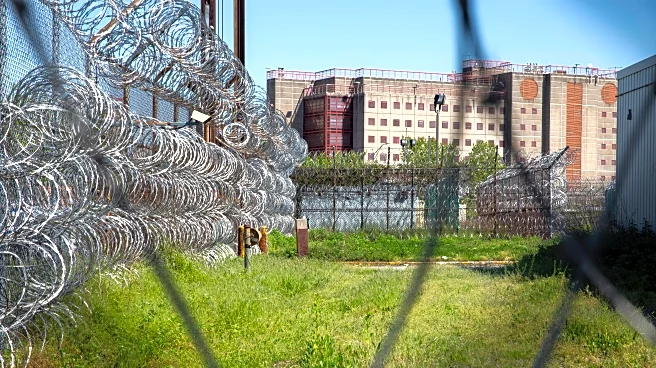What's Happening?
A new book titled 'Fabulous Fountains of New York' by Stephanie Azzarone explores the intriguing stories behind New York City's iconic fountains. The book, set to be released on September 2, delves into the history and scandals associated with these landmarks. Notable fountains such as the Bethesda Fountain in Central Park and the Robert Ray Hamilton Fountain in Riverside Park are highlighted. The book reveals that many fountains were originally designed to provide water for horses or to discourage alcohol consumption among New Yorkers. Azzarone, along with her photographer husband Robert F. Rodriguez, has documented these stories, including the scandalous tale of Robert Ray Hamilton, a New York State Assembly Member, whose fountain was delayed due to a personal scandal.
Why It's Important?
The book sheds light on the cultural and historical significance of New York City's fountains, which are often overlooked as mere decorative elements. By uncovering the stories behind these structures, the book provides a deeper understanding of the city's history and the societal norms of the times when these fountains were constructed. This exploration of public art and its historical context can enhance appreciation for urban landmarks and contribute to cultural tourism. Additionally, the book highlights the role of women in public art, such as Emma Stebbins, who was the first woman to receive a commission for a significant public work in the city.
What's Next?
The release of 'Fabulous Fountains of New York' is expected to generate interest in the city's historical landmarks and may inspire further research and publications on similar topics. The book could also lead to increased tourism to these sites, as visitors seek to experience the stories firsthand. Additionally, the book may prompt discussions on the preservation and maintenance of historical public art in urban settings.
Beyond the Headlines
The book's exploration of the personal and societal stories behind the fountains offers insights into the cultural and social dynamics of historical New York City. It highlights the intersection of art, politics, and personal lives, revealing how public art can reflect broader societal issues. The book also underscores the importance of preserving historical narratives and the role of public art in shaping urban identity.












